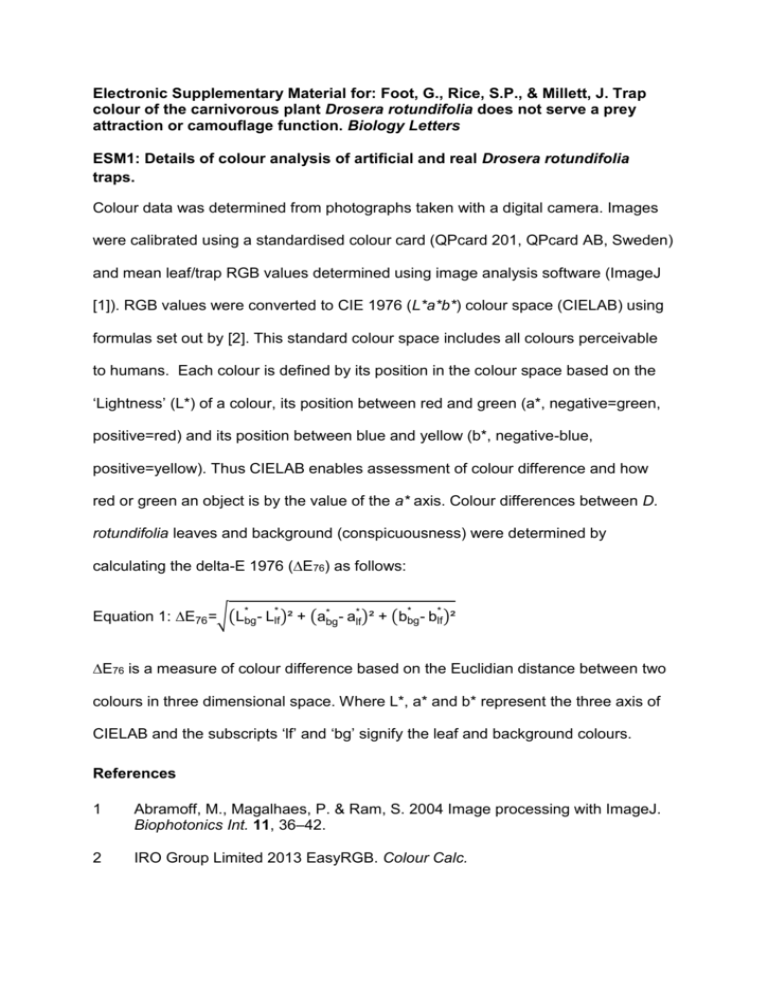ESM1 - Biology Letters
advertisement

Electronic Supplementary Material for: Foot, G., Rice, S.P., & Millett, J. Trap colour of the carnivorous plant Drosera rotundifolia does not serve a prey attraction or camouflage function. Biology Letters ESM1: Details of colour analysis of artificial and real Drosera rotundifolia traps. Colour data was determined from photographs taken with a digital camera. Images were calibrated using a standardised colour card (QPcard 201, QPcard AB, Sweden) and mean leaf/trap RGB values determined using image analysis software (ImageJ [1]). RGB values were converted to CIE 1976 (L*a*b*) colour space (CIELAB) using formulas set out by [2]. This standard colour space includes all colours perceivable to humans. Each colour is defined by its position in the colour space based on the ‘Lightness’ (L*) of a colour, its position between red and green (a*, negative=green, positive=red) and its position between blue and yellow (b*, negative-blue, positive=yellow). Thus CIELAB enables assessment of colour difference and how red or green an object is by the value of the a* axis. Colour differences between D. rotundifolia leaves and background (conspicuousness) were determined by calculating the delta-E 1976 (∆E76) as follows: Equation 1: ∆E76 =√(L*bg - L*lf )² + (a*bg - a*lf )² + (b*bg - b*lf )² ∆E76 is a measure of colour difference based on the Euclidian distance between two colours in three dimensional space. Where L*, a* and b* represent the three axis of CIELAB and the subscripts ‘lf’ and ‘bg’ signify the leaf and background colours. References 1 Abramoff, M., Magalhaes, P. & Ram, S. 2004 Image processing with ImageJ. Biophotonics Int. 11, 36–42. 2 IRO Group Limited 2013 EasyRGB. Colour Calc.






